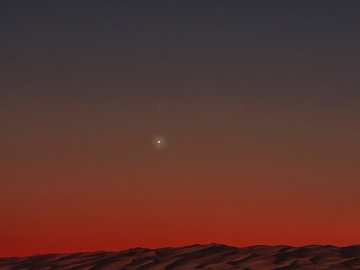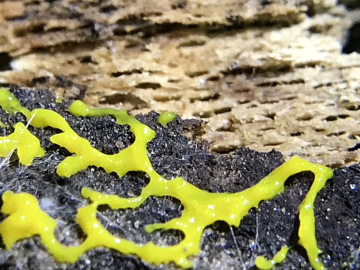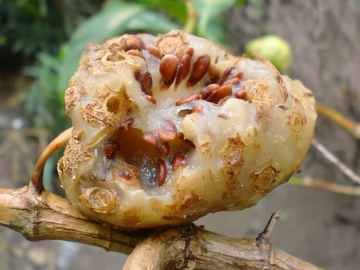Under the Microscope
Kathryn Fry
In the 1920s, it was the only thing a woman
without an education could do. That and Nursing.
Isobel Bennett AO (1909 – 2008)
Part 1 The Christmas Cruise
William J Dakin meets Isobel and her sister
at boat drill, his wife by his side, his voice
ruffling the deck of the P&O Straithaird.
They kept a friendly eye on us, she writes.
Isobel, twenty-three and out of work,
learns of the world in the word ‘zoology’.
Part 2 It was all a matter of practice
i
Professor Dakin invites his secretary, Isobel,
to focus on the microscope. And she joins
the crew of the Thistle vessel, sea legs steady
even up the mast with brush and varnish.
She hauls in the silk net from Broken Bay
to sort, to study, to sum the catch
on the laboratory bench. Month by month
records grow, the script becomes a monograph
becomes the reference, a standard like gold.
ii
They sift King Prawns in Lake Illawarra.
Phenomenal win they offer fishery: find
prawns large as young lobsters, out at sea.
iii
Isobel considers the craft of concealment:
a crab fixing grit or sponge bits to its carapace,
the stick insect, chromatophores of cuttlefish,
a sand-coloured goby in the sand, the leafy sea
dragon, how squid by the bombora turn to water
and back again, their eyes set on her stance.
Meticulous in everything he did, mercurial
in temperament. Forthright. Irrepressible.
Enough was never enough for Professor Dakin.
After the war, Isobel and three zoologists pack
the 1940 Ford sloper: boot stacked with ropes,
nets and lidded jars; tents and cases on the roof
rack, hats and oranges on the back shelf. Going
north to Coolangatta for a dozen coastal points;
ninety species she’ll register at Merewether.
iv
You haven’t lived
until you’ve seen a sea-worm
under the microscope.
At Gorgonia Hole, in clear twenty-four
degrees with little current, she floats
in the thrill of flying without the fall.
Only the light drops in long shafts
down the blue. There among the sculptures
of limestone, as if she’s before the birth
of fish stripe and dash and swirl in
black, scarlet, orange; that pea-green
parrotfish aslant in a trance by streaks
of cleaner wrasse (how he shimmies
when they’re done), the school in flicks
of pink, lemon and mother-of-pearl.
In the shallows, two turtles are mating;
the female gasps air and groans into
the long and moonlit hours.
v
I have rock-hopped from Double Island Point
to southern Tasmania, from Wilsons Prom
to the Leeuwin and north in WA …
See her combing mainland shores and islands:
Heron, Lord Howe, the Low Isles, Macquarie,
Maatsuyker, Kangaroo; the list is long.
Picture her with upturned boulders by reef or
tidal pool, to count worms, tunicates, and sponge;
showing students the shapes and singularities
in the zones and among the fronds. Faux play
in shallow brine near that wild swirl about
the coral or cunjevoi or kelp. Hear her: how
a sea star cut in half becomes two; the crabs’
moult and couple, the moonlight trigger of
a coral cloud, squid’s quick clasp and dump,
a sea hare’s eggs on a string, the sea squirts’
release and the common toados’. See her over
the oceans in a floating class on the Te Vega,
and the Galathea, or the descent to Kieta
as the plane circles over sand cays and reefs;
how she notes in Arawa Bay: dolphins and
tuna preying on small fish gorging
on a swarm of larvae, terns diving into the mix
and taken in turn by frigates on the wing.
Part 3 Legacy
Who can’t love the wafting nudibranchs,
the shell-less slugs, like Glaucus, little drifters
of decoy: lapis-back, a blind for the birds,
silver-under to fool the fish; smaller than
a child’s thumb, its stomach slips the stinging
cells of a blue bottle into its own defence.
Pretty on the cover for Isobel’s ninetieth.
And there’s her photo, a gilded Glaucus
pinned to her red cardigan, her papers soon
for the nation’s archive, the boxes loaded
for the trolley. Nine books, one reef,
one genus, five species, carry her name.
One expects to quietly fade away and be
forgotten, but with the Mueller Medal
I felt I had joined the immortals.
* Lines in italics are from the Papers of Isobel Bennett, National Library of Australia MS 9348.


